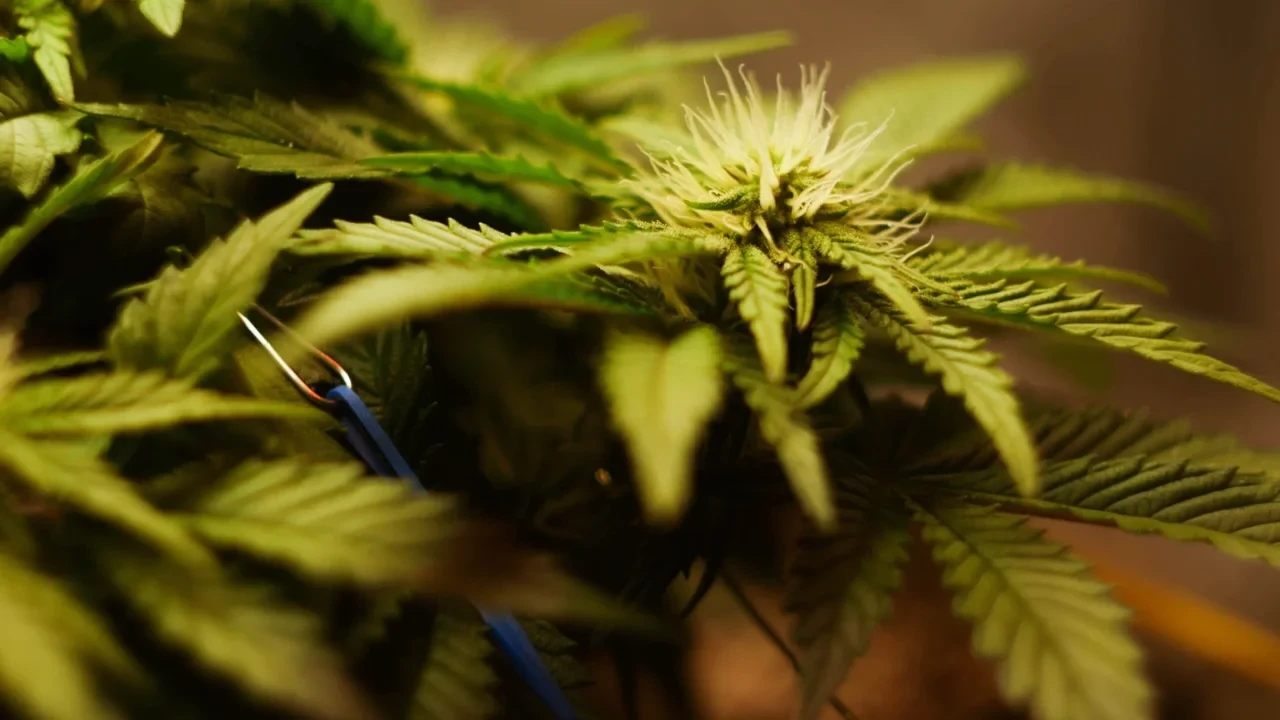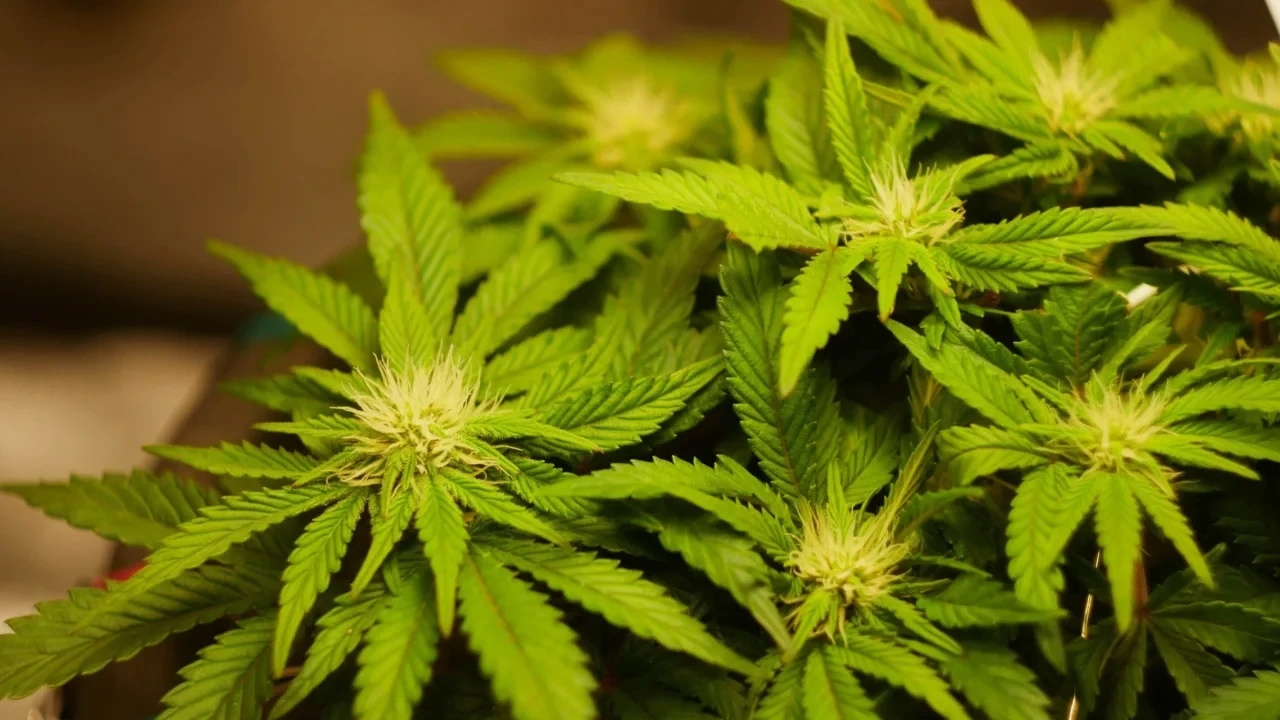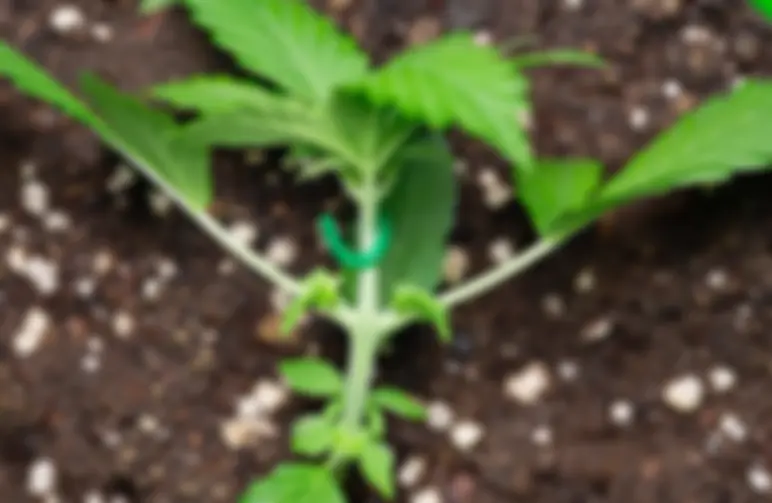Want to know how autoflower low-stress training (LST) works and when to use it? Here, we look at how LST can help improve your yields when growing a cannabis plant from autoflower seeds.
Simple and inexpensive to implement, it's a great way for growers who have had one or two grows under their belt and are trying to get to know their cannabis plants in a more hands-on way.
The principle of most LST techniques is to reduce the height of your autoflower by bending leaves to become in sync with the side branches. This encourages lateral growth for an autoflower crop that’s easy to manage, with more lucrative harvests.
Using low-stress training, autoflowers can also be kept even more compact, which is very helpful when you do not have an endless amount of vertical space when you grow your weed seeds.

Advantages of LST on Autoflower cannabis plants
Autoflower strains may be a wonder when it comes to speed of growth, but they can't be treated the same as regular photoperiod strains. This is especially so regarding high-stress training techniques, as you cannot manipulate the vegetative phase for enhanced growth. For instance, whatever stress you place on your weed plant cannot be compensated for by prolonging the vegetative process like you can with photoperiod strains.
In theory, normal cannabis strains can be kept alive and vegetative for years - autoflower plants cannot. However, you can still implement many techniques to achieve more significant results, including low-stress training to produce bigger colas.
Little stress
LST is advantageous because, just like other low-stress training techniques, it places very little stress, as the name suggests, on your cannabis plant. This is excellent for fast-growing autoflowers that have little room for error and are at risk of being stunted.
Put simply, LST is far less likely to hinder growth compared to high-stress techniques like topping when you physically cut the top of your plant off. A simple bend of the branch during its vegetative stage places very little stress on the autoflowering plant as a whole while promoting a flat and wide canopy for better light exposure.
More yield
Autoflowering plants are naturally more inclined to grow just one large bud with smaller offshoots along its branches. As their main stems grow horizontally, only this central bud gets the most light with this type of plant growth.
By bending the branches, you trick the auto plant into thinking its main stem is gone and that the smaller buds must now compete for more light. This allows you to produce multiple top buds rather than one.
The benefit of this is clear: greater yields with a fairly low risk of failure due to low stress. While some experience is recommended when applying this to autoflower strains, low-stress training is still among the simplest techniques to implement.
All in all, it’s a great space saver that promotes controlled growth in compact areas while improving light absorption and the production of dense buds.
Indoor/outdoor stealth growing
As for where to apply low-stress training, you can utilize this technique both indoors and outdoors. Most growers favor using LST for indoor crops because light is often more static (unlike natural sunlight), meaning that growing directions are easier to predict.
However, low-stress training is particularly useful in temperate climates where light is less prominent day-to-day and where sunlight is a more precious commodity! It will also be more discreet because it keeps your cannabis plants closer to the ground, so there are definitely some benefits to LST autoflower plants outdoors.
When to apply Low Stress Training on Autoflowers?
It’s best to start low-stress training once you’ve got the hang of growing autoflowers as-is. This will give you the necessary first-hand experience of how autoflowers grow, the autoflower nutrient intake, and the watering timetable. Why is this important? Because the actual period in which to start training is fairly early in the vegetative phase. Don't try this out on your very first autoflowering cannabis plant - learn how to grow autoflowers first.
Do you have some growing experience under your belt? You want to begin training your autoflowers when they've developed at least two nodes. Starting early during the vegetative stage is crucial because you want your work to take effect before the flowering phase begins.
Autoflowers can sometimes reach their flowering stage within just three to four weeks - so start low-stress training before this happens. Implementing training too late will risk stunting your cannabis plant at its most crucial flowering stage.
Why is training discouraged during flowering? Because cannabis stems become more rigid and are more prone to snap. One mistake here, and you risk jeopardizing your precious buds. During the vegetative phase, stems are more malleable and can recover.
While it's always good practice to start LST earlier than later, you can implement it at any time during the vegetative stage. Even if you're not going for a full autoflower ScrOG (where you apply a mesh above the plant pot to guide your branches horizontally), you can experiment at your own pace whenever you like.
Some growers even like to apply some light LST training a week or so before flowering. Just remember that with a shorter autoflowering vegetative stage, you should get started as soon as possible.
How to LST autoflowers?
1. Get everything you need
You want to start by getting all the supplies you'll need. Pick up some materials for tying down/onto branches, like plant wire or soft purpose-built plant ties. Avoid using string, as this can irritate the plant’s stems. At a push, you can use elastic bands.
You'll also need a stake to keep the plant sturdy. Opt for thin and lightweight stakes like bamboo. Some growers choose to place bamboo poles horizontally across the plant pot for anchoring, too. A small drill also comes in handy for creating holes in the pot to attach your ties to. Lastly, some good quality duct tape is indispensable for fixing snaps or ties.
2. Prepare pots
Your tied-down (lower) branches need to be attached to your pot.
The easiest method of doing this is to drill holes around your container’s rim. You can start off by drilling holes at an even distance around the container so that you have more options when the LST begins.
You’ll also want to affix your stake to the plant’s stem here to keep it sturdy. Don’t fill your pot to the top with soil, but leave a few extra centimeters/inches for these holes.
3. Anchoring
Now, the fun begins. To anchor the stem you'd like to bend and form, simply affix your tie, gently pull it down, and link it with a hole you made in your container. While there are many methods of LST, the idea is to create an even top canopy – so bend your stem and branches in line with one another.
There are a number of other techniques here to achieve a flat canopy, like pruning for better light absorption. While there isn’t a rule book on how to shape, it’s always good to start with a mental plan rather than just making it up as you go along. Know the shape you want and put it into practice.
4. Watch and wait
Once you’ve shaped your plant, and it all looks nice and even, wait. Autoflowers grow fast, so you may spot early changes within the same day! Remember, LST is a constant process that you’ll have to keep an eye on.
You don’t just anchor your branches and leave it to grow, you’ll have to guide your plant over time to fill an even canopy. If you notice your autoflower stretching, provide more light for longer periods of time. Giving your autoflower greater access to light will promote branch formation rather than single-stem stretching.
5. Repeat process
LST autoflower weed plants require constant revision and upkeep to maintain an even canopy. Return to your plant at least every 24 hours and tie and anchor any new branch formations. You can repeat this process as long as your vegetative plant is growing, although you want to ease up when you spot signs of pre-flowering.
6. Flowering
Once your autoflower plant starts flowering, it will begin to mature very quickly. At this point, you don't want to adjust your branches and stems any further because you risk inflicting permanent damage.
However, you can still continue trimming and pruning the branches below that have no chance of getting light. This will re-direct energy towards the exposed branches for greater yields. You can also begin to remove the foliage below for better ventilation and ensure that your resinous buds are getting all the nutrients they require. Step back and admire your spider-like handiwork as your autoflower meets its full potential.

Combining LST autoflower with other techniques for your weed plants
If you have mastered low-stress training on your autoflower cannabis plants and want to experiment with the fast-growing autoflowers, there are numerous training options to try.
While we’ve outlined the basics of the tie-down method above, there are many different training methods to pursue that will grow more bud sites and improve yields. You can apply the earlier-mentioned ScrOG, which uses mesh screens to control and stabilize growth. Another option is to Sea of Green autoflower plants, a method that maximizes compact spaces for quick, high-yield harvests.
What strains of cannabis plant can I best use for low-stress training?
First designed as a means of height control rather than improving yields, it's now apparent that low-stress training is a great way to push your autoflowers to the limit. For the best success, choose an autoflower strain that responds well to light training.
We prefer to go for autoflower seeds that take a bit longer to grow and are larger in size than average autoflowers. Northern Lights x Big Bud Autoflower seeds and Jack Herer Autoflower seeds, in particular, offer great potential with ScrOG techniques.
Another favorite is the high-THC GG4 Auto seeds. By implementing tie-down LST with this bushy hybrid, you can promote more resinous buds to develop as it flowers.
Overall, hybrid strains with Sativa dominance tend to grow better with low-stress training, as they are capable of growing taller. That doesn't mean that indica seeds won't benefit from receiving greater light distribution, but the effects are less pronounced.
If you’re interested in exploring these differences yourself, you can buy indica marijuana seeds and experiment with various training techniques to see how they enhance your grow.
Low-stress training is easy to implement once you've got the hang of growing autoflowers. For a bit of an experiment, why not test out LST on one plant and leave another to grow naturally? You can then compare and contrast your results. Either way, LST is a great skill to add to your growing arsenal and one that can be learned easily at home.





